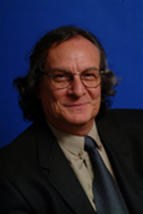Transfers, Groundwater Overuse, Voluntary Agreements, and Lots of $$$
February 3, 2025
Contact: Barbara Vlamis, AquAlliance, 530-895-9420
Chico, CA. AquAlliance, Central Delta Water Agency, the California Sportfishing Protection Alliance, and the California Water Impact Network filed a challenge to the final Environmental Impact Report (FEIR) for the Water Reduction Program Agreement Between the Sacramento River Settlement Contractors Nonprofit Mutual Benefit Corporation, Individual Sacramento River Settlement Contractors, and the U.S. Bureau of Reclamation in Sacramento Superior Court on January 28, 2025.
The lawsuit alleges violations of the California Environmental Quality Act (CEQA) with Glenn Colusa Irrigation District’s approval of the FEIR, such as:
- The FEIR failed to disclose the alarming subsidence trends in the Colusa Subbasin where much of the Project’s activities will occur.
- The Project description only provided a general description of the proposed drought resiliency projects, including the proposed conjunctive use program to artificially recharge surface and groundwater supplies, and never identified where each project will be implemented or what the scale of these projects will be.
- The FEIR failed to analyze the impacts of increased groundwater use on already overtaxed, declining groundwater. It never identified where 30 new groundwater wells will be constructed or where existing groundwater wells will be utilized.
- The California Department of Fish and Wildlife’s extensive early Notice of Preparation comments were neglected by GCID, which left the impacts analysis on Groundwater Dependent Ecosystems, Interconnected Surface Water, and groundwater substitution pumping.
- The FEIR failed to disclose that throughout the last decade, state and federal agencies have attempted to negotiate and solidify, in secret and without public input, “Voluntary Agreements” with Sacramento River Settlement Contractors whereby the agencies pay Sacramento River Settlement Contractors to reduce their demand through the implementation of water-related projects like those being contemplated under this Project.
AquAlliance’s Executive Director, Barbara Vlamis, explained, “The multi-decades efforts by the California Department of Water Resources and the U.S. Bureau of Reclamation to squeeze ever more water from the streams and groundwater basins of the Sacramento Valley are repeating the destructive patterns in the Owens and San Joaquin valleys. If the agencies truly wanted to find any potential water that wouldn’t destroy the Sacramento River’s valley watersheds, they would have conducted real science over the last four decades. But no, science would have demonstrated that bleeding another watershed dry would destroy the last, somewhat healthy watershed to benefit desert agriculture in the south-state. To represent the small farmers, communities, and the natural heritage, we had to pursue our legal options.”
This project is financed with public funds. The Bureau will provide $250,000,000 and asks only that “The SRSC shall use at least 50.1% of the Inflation Reduction Act proceeds to invest in drought resiliency projects.” DWR is allocating almost $55 million.
The lawsuit asks the court to declare that GCID’s FEIR failed to meet minimum requirements of the California Environmental Quality Act and that all approvals be set aside.
AquAlliance has been joined by the California Sportfishing Protection Alliance and the California Water Impact Network, and they are represented by the Aqua Terra Aeris law firm. Co-plaintiffs in the litigation also include Central Delta Water Agency and they are represented by the Soluri Meserve law firm.
#
AquAlliance is a 501 (c) (3) non-profit public benefit corporation established to defend northern California waters and to challenge threats to the hydrologic health of the northern Sacramento River watershed to sustain family farms, communities, creeks and rivers, native flora and fauna, vernal pools and recreation. www.aqualliance.net
Background
A) Lawsuit filed: https://aqualliance.net/wp-content/uploads/2025/01/25.01.28-Petition-GCID.pdf.
B) Maps of subsidence created by AquAlliance from DWR data that is ignored in the GCID FEIR:
https://aqualliance.net/ground-water-issues/subsidence/subsidence-in-colusa-glenn-tehama-sacramento-counties-2015-2024/
C) Historic maps illustrating the groundwater conditions in the Sacramento Valley.
DWR stopped producing these maps after 2021. The public must now track the data through numerous Groundwater Sustainability Agencies.
https://data.cnra.ca.gov/dataset/northern-sacramento-valley-groundwater-elevation-change-maps
1 GCID 2024. Agenda Memo 12/30/2024 Agenda Item No. 6.B. Resolution No. 2024-14. “WHEREAS, the State of California has provided funding from FY 2022-23 Senate Bill 154 for Participation in the FC Program [Sacramento River Flow Contribution Program], and $54,884,160 is available to Sacramento River Settlement Contractors that participate in the HR&L Program [“Healthy Rivers & Landscapes Program”]; and…”
